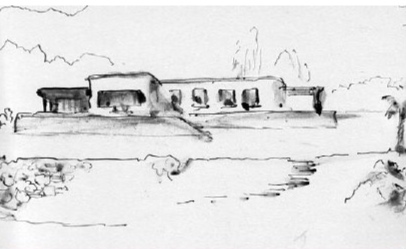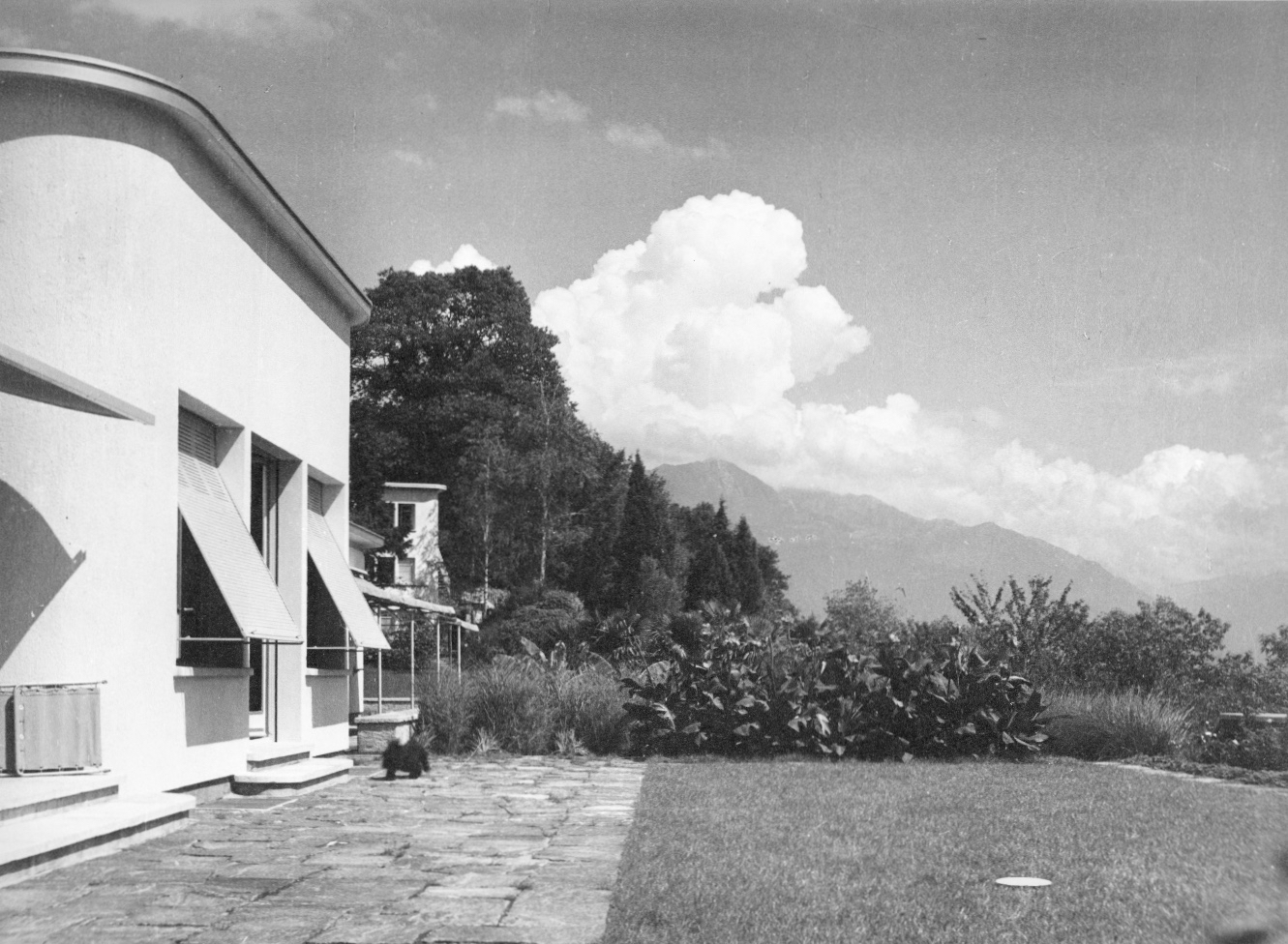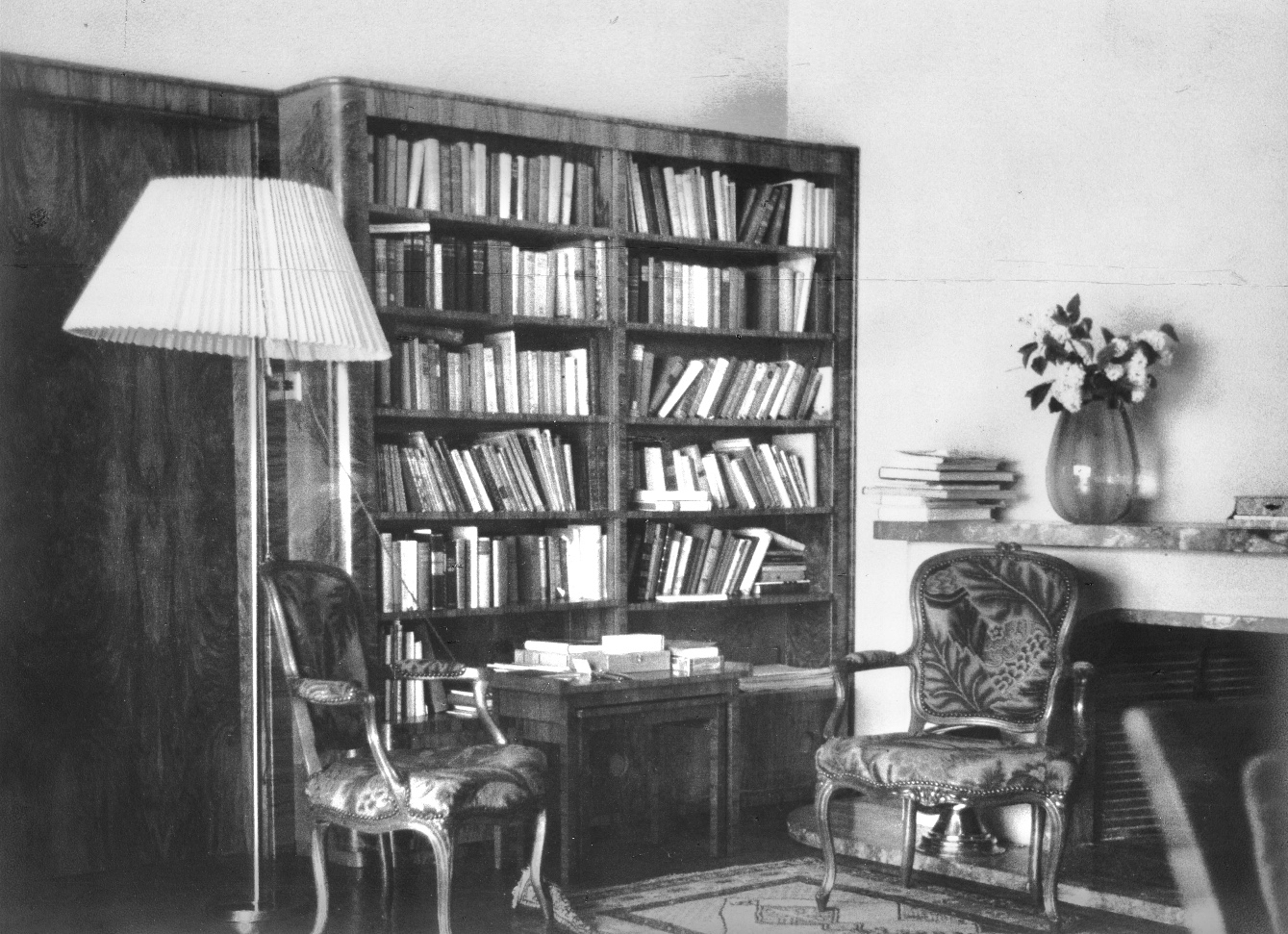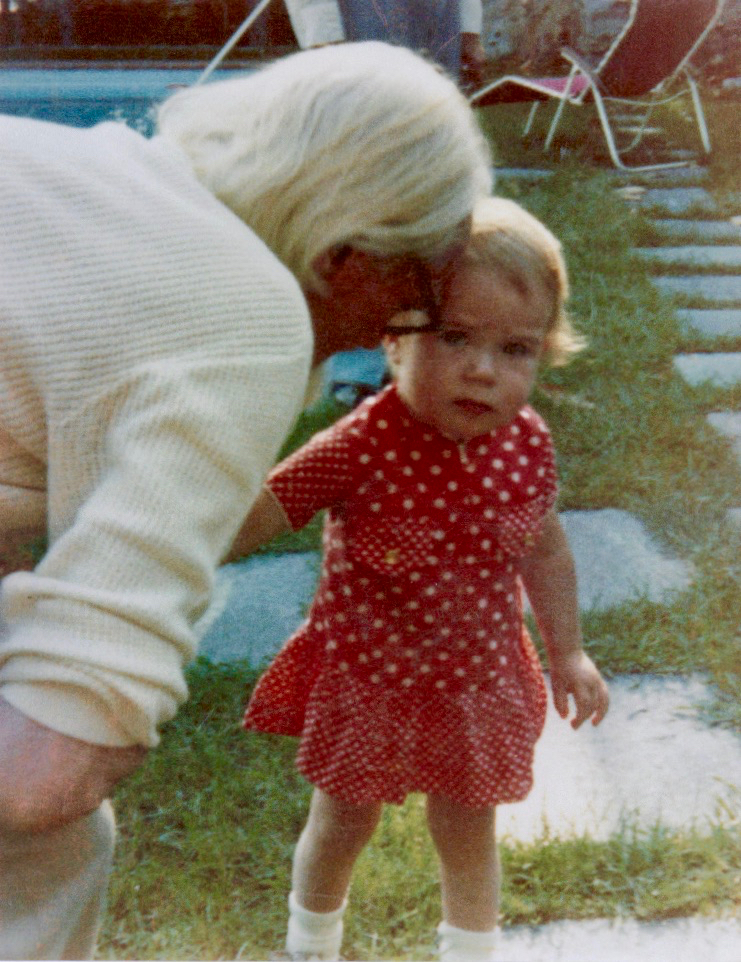100 Years Bauhaus - Carl Weidemeyer in Ticino
Carl Weidemeyer
Carl Weidemeyer is known above all as the architect of the San Materno Theatre in Ascona, which has been preserved in its entirety to this day, also thanks to the exemplary renovation completed in 2009 under the direction of the architect Guido Tallone, who has preserved all the valuable details of the building (e.g. its surprising internal polychromy). But Weidemeyer is also and above all a versatile and productive artist: painter, sculptor, printmaker, illustrator, graphic artist, designer of toys, furniture and other objects. A rich testimony to his work can be found in the Museo Comunale d'Arte Moderna in Ascona, which acquired the Carl Weidemeyer collection in 1995, a comprehensive body of paintings, graphic works, drawings, sketches, plans, architectural designs and written documents with a total of over 3300 elements.
The most important aspects of his architectural and artistic work were explored in the catalogue of the exhibition, organized in 2001 by the Museo Comunale d'Arte Moderna Ascona in collaboration with the Archivio del Moderno of the Academy of Architecture Mendrisio. It is not a question of returning to these aspects, but of following Carl Weidemeyer's human and creative path from his beginnings to his years in Ticino. A life that, in the course of the analysis, turns out to be completely organic and not artificially divided between two places (Worpswede and Ascona), as it is often portrayed, and that is therefore to be considered in its entirety. The threads that Weidemeyer made at the beginning of his life, be they personal or cultural ties, never disappear and result in a dense web that integrates him into a much broader debate that shaped the cultural renewal of an entire epoch from the late 19th to the thirties of the 20th century. Carl Weidemeyer is primarily associated with German culture, since he was educated in Germany at the beginning of the 20th century and shaped the basic elements of his work and thinking.
In those decades, Germany was undergoing a profound process of cultural and artistic change, which, incidentally, affected the whole of Europe. The country was therefore at the centre of an international debate in every respect, which Weidemeyer was aware of and in which he often took part, in the search for new ways and experiments to respond to the questions of his time. Instead of a banal "touche-à-tout", as he has been defined, Weidemeyer should be seen as a man of his time who, in full awareness, strove to find a universal language that overcomes the limitations of sectors and categories, in accordance with the romantic ideal of the Gesamtkunstwerk, which, however, was renewed by the experiences of the avant-garde of the first half of the 20th century and was therefore already fundamentally modern.
The San Materno Theatre
In 1928 Carl Weidemeyer completed his first work in Ascona, the Theater San Materno for Charlotte Bara. The architect designed not only the structure of the building, which was already defined as a "dance temple" because of its basilica-like structure, but also the interiors, from the furnishings of the performance room (equipped with escalators and movable elements to guarantee versatile use) to the furniture in the artists' apartments. Weidemeyer thus followed the principle of the uniform and complete elaboration of the architectural object, and the result is a coherent and harmonious whole in every respect, a crystalline creative space conceived by an architect and artist. The realisation of the theatre provided Weidemeyer with an immediate reaction and an extremely good response in the press. In February 1929 the theatre was presented in the Swiss architectural magazine "Das Werk" by Grete Wels, at the suggestion of the Swiss editor and renowned architect Hans Bernoulli, while photographs of the theatre interiors were published in 1930. The architect Eduard Keller also mentioned the theatre in the article "New Buildings in Ticino", which appeared in "Das Ideale Heim"; further publications in Switzerland were added. The presentation of Weidemeyer's works in "Das Werk" provided him with international contacts and publications. Also, in 1929, the Hungarian architect Virgil Bierbauer was interested in the theatre, which he published in the magazine "Tèr ès Forma" under his direction and in the Hungarian art magazine "Magyar Muvèszet". Virgil Bierbauer travelled personally to Ascona to get to know Weidemeyer's buildings and to establish a lasting friendship with him, which is confirmed by visits and regular correspondence. Bierbauer will then continue the expansion of Weidemeyer's works in Hungary and publish his later buildings in 1930 and 1934. In Germany, the important magazine "Das Neue Frankfurt" showed photographs of the San Materno Theatre, among other works of dance spaces. In Italy, Weidemeyer's work and especially the theatre were first shown in 1930 in the magazine 'Architettura e arti decorative', thanks to the interest of architect and urban planner Plinio Marconi, who had travelled to Ascona to admire the building. In 1932 Weidemeyer's work was reviewed in the magazine "Architettura" by Luigi Vietti, also an architect and town planner who also travelled to Ascona.
Thanks to the San Materno Theatre and the buildings that followed in Ascona, Carl Weidemeyer made a name for himself in the world of modern architecture, such as the invitation to participate in the exhibition "Modern Architecture. International Exhibition, extent of modern architecture" in 1932 at the Museum of Art in New York. At the local level, Weidemeyer's buildings are among the first examples of rationalist architecture in Ticino.
The Villa Chiara
In 1934, the famous Oppenheimer family had two villas built by the famous architect Carl Weidemeyer on their huge property at perhaps the most beautiful site of the then sparsely developed Ascona: the three-storey Casa "Benvenuto" and the Villa "Chiara", a sensational "modern" Bauhaus-style bungalow villa. Today a listed building, Villa "Chiara" is inhabited and maintained by the Oppenheimer and Sonanini families. The location is as breathtaking as ever, the park has become even more beautiful over the years. Now the families would like to sell, a completely unusual opportunity for connoisseurs and collectors.
We talked to the owner, Mrs. Sonja Rasmussen-Oppenheimer.
You are the granddaughter of the owner of Villa Chiara. Have you met Mr. Carl Weidemeyer personally?
"Carl Weidemeyer was a close friend of my family. At my baptism, at the age of 90, he felled a somersault tree on the meadow in front of Villa Chiara. As an architect, painter and furniture designer, my profound respect belongs to him. Especially because I paint myself, I appreciate his multi-layered, creative ability and his enormous material competence. My grandparents built the Villa Chiara with him, which is now in my co-ownership and I was able to renovate it in 2017 in collaboration with the Cantonal Heritage Conservation Society in Bellinzona".
Exhibition Carl Weidemeyer 1882-1976 between Modernism & Bauhaus
March 2 - May 12, 2019
On the occasion of the 100th anniversary of the Bauhaus, the Museo Castello San Materno dedicates an exhibition to one of its representatives, the German architect Carl Weidemeyer, who left the Teatro San Materno to the municipality of Ascona, the only remaining example of a Bauhaus theatre in Europe.
Since 1995, the Municipality of Ascona has had an important collection of documents and works by the Bremen artist, and with this exhibition wishes to pay tribute to his work as a painter, draughtsman and architect. In the complex transition between the 19th and 20th centuries, Weidemeyer was able to embody the modern and innovative spirit of the time in an original way, in a synthesis between naturalism and abstraction.
Thanks to the Fondazione Carl Weidemeyer for the friendly support
TV documentation from Carl Weidemeyer a RSI
https://www.rsi.ch/la1/programmi/informazione/il-quotidiano/Il-Quotidiano-11461505.html
Per saperne di più
Fondazione Carl Weidemeyer
Via Collinetta 73
CH-6612 Ascona
Source: this text is compiled from several excerpts of the book "Carl Weidemyer" published in 2018 and written by Veronica Provenzale. It is edited by the Museo Communale d'Arte Moderna Ascona and Armando Dadò editore Locarno. ISBN 978-88-8281-507-3





















